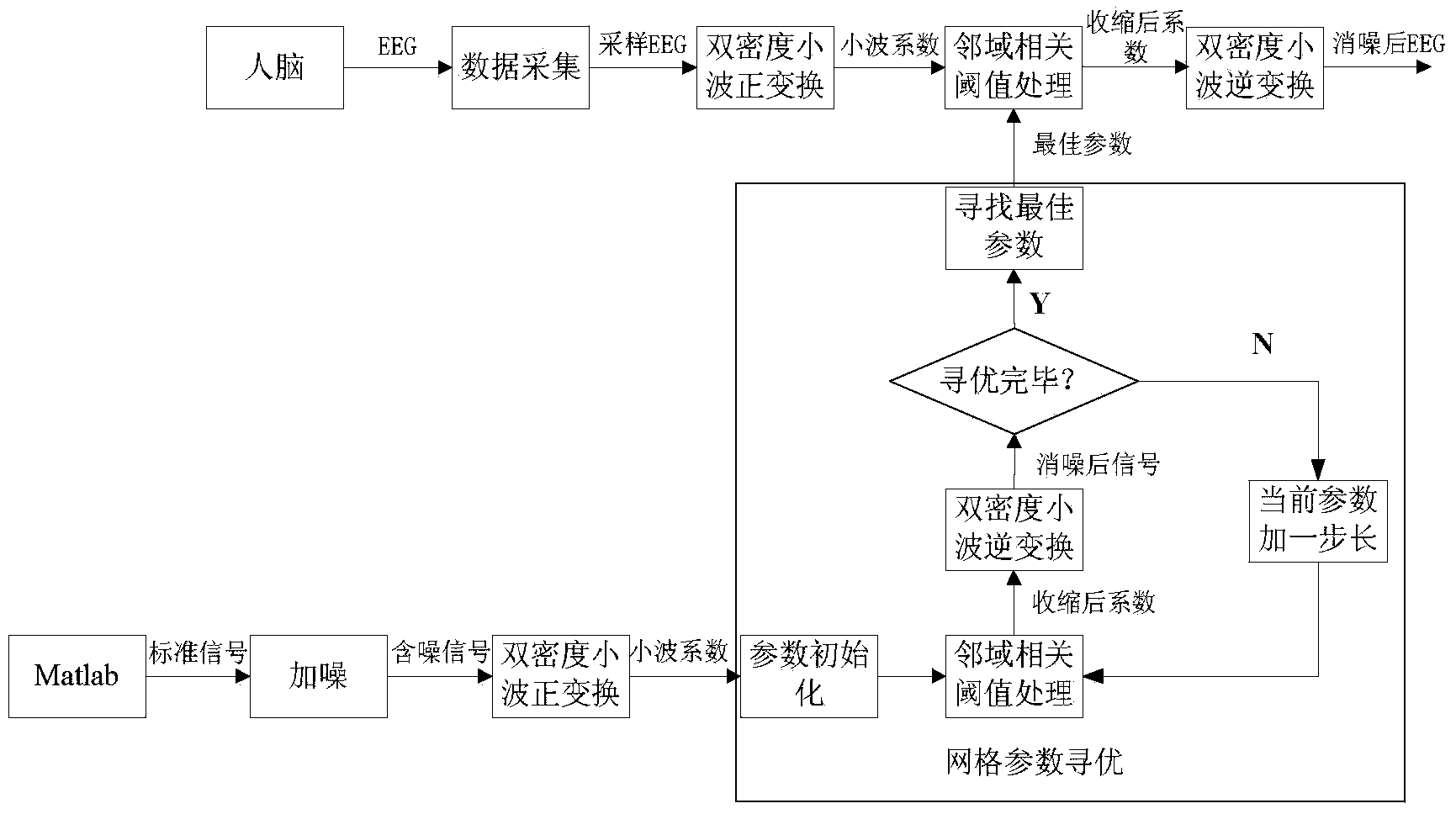EEG noise elimination method based on dual-density wavelet neighborhood related threshold processing
An EEG signal and neighborhood correlation technology, which is applied in the field of biomedical signal denoising, can solve the problems of not considering the local dependence of wavelet coefficients, the degradation of EEG denoising performance, and the excessive deviation of coefficient estimation values, etc.
- Summary
- Abstract
- Description
- Claims
- Application Information
AI Technical Summary
Problems solved by technology
Method used
Image
Examples
Embodiment Construction
[0040]The embodiments of the present invention will be described in detail below in conjunction with the accompanying drawings: this embodiment is implemented on the premise of the technical solution of the present invention, and provides detailed implementation methods and specific operating procedures.
[0041] Such as figure 1 As shown, this embodiment includes the following steps:
[0042] Step 1. Obtain sample data of human brain motor imagery EEG signals, specifically: the present invention adopts the Scan4.3 system of American Neuroscan Company to collect sample data, the sampling frequency is 250Hz, and the precision is 32bit. A total of 10 subjects, all healthy college students aged 24±1.6, were tested in a clear state. The EEG electrodes were placed according to the international standard lead 10-20 system, with the left mastoid as the reference electrode and the right mastoid as the ground electrode. The schematic diagram of the data collection experiment is shown...
PUM
 Login to View More
Login to View More Abstract
Description
Claims
Application Information
 Login to View More
Login to View More - R&D
- Intellectual Property
- Life Sciences
- Materials
- Tech Scout
- Unparalleled Data Quality
- Higher Quality Content
- 60% Fewer Hallucinations
Browse by: Latest US Patents, China's latest patents, Technical Efficacy Thesaurus, Application Domain, Technology Topic, Popular Technical Reports.
© 2025 PatSnap. All rights reserved.Legal|Privacy policy|Modern Slavery Act Transparency Statement|Sitemap|About US| Contact US: help@patsnap.com



